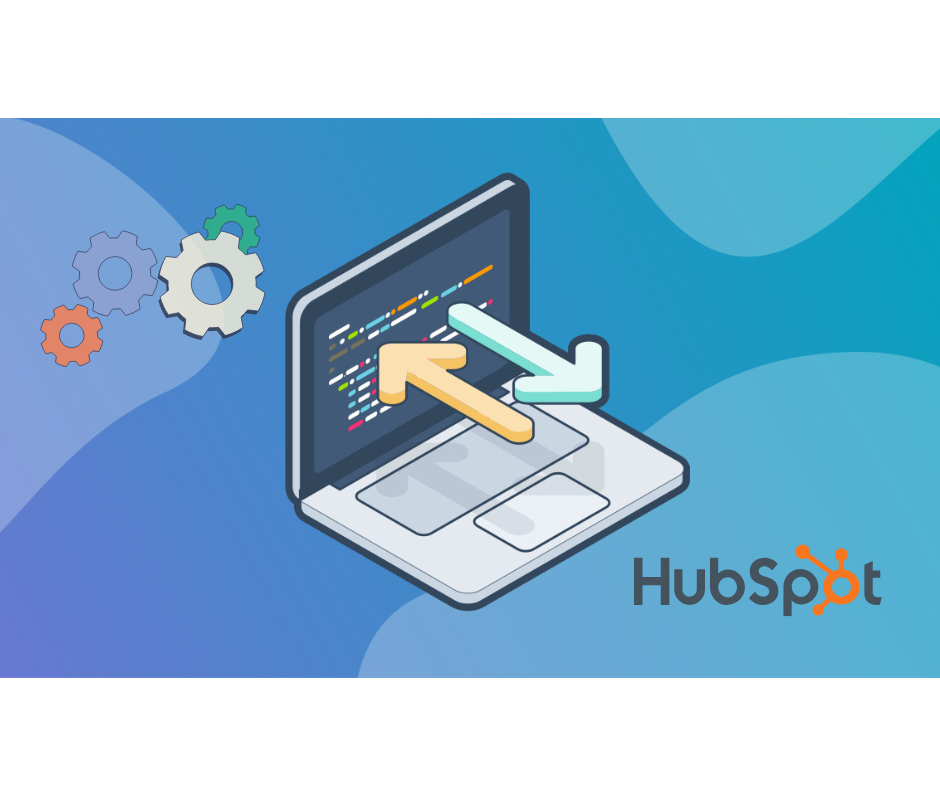
A Technical Look at HubSpot's Serverless Functions: Architecture, Use Cases, and Best Practices
Serverless Comes to HubSpot
The digital landscape is constantly evolving, and a major shift in application development has been the rise of serverless computing. This paradigm allows developers to build and run applications without managing servers, abstracting away infrastructure concerns like provisioning, scaling, and patching. The benefits are compelling: immense scalability, cost-efficiency (you only pay for compute time used), and a sharper focus on writing code that solves business problems.
Now, this powerful paradigm has a native home within the HubSpot ecosystem: HubSpot Serverless Functions. These functions are HubSpot’s answer to running custom backend code directly within the platform, offering a seamless way to extend functionality, automate complex processes, and integrate with external systems without deploying and maintaining separate servers.
This post will provide a technical deep-dive for developers, technical architects, and DevOps engineers. We’ll explore how HubSpot Serverless Functions work, how to build with them, their inherent strengths, and their current limitations. Our purpose is to help you understand the technical underpinnings necessary to leverage these functions effectively for your HubSpot customizations and integrations, ultimately empowering you to build more powerful and efficient solutions.
What Exactly Are HubSpot Serverless Functions?
At their core, HubSpot Serverless Functions are event-driven, short-lived compute instances entirely managed by HubSpot. This means HubSpot handles all the underlying infrastructure, allowing you to deploy your code and have it execute in response to specific triggers.
To put this into perspective, think of them as HubSpot’s flavor of Function-as-a-Service (FaaS), similar to well-established platforms like AWS Lambda, Azure Functions, or Google Cloud Functions. The key differentiator, however, is their tight, native integration with HubSpot data and events. They are designed to operate within the HubSpot environment, making interactions with the CRM, CMS, Marketing Hub, and other HubSpot APIs exceptionally efficient.
Key Components:
- Function Code: Currently, the primary focus is on Node.js (specifically Node.js 16). This is where you write your custom logic.
- Triggers: These define how and when your functions are invoked (e.g., in response to a form submission, a workflow action, or an API call).
- Execution Environment: This is the managed runtime provided by HubSpot where your function code executes in an isolated container.
- HubSpot API Integration: Functions come with built-in HubSpot API clients and managed authentication, greatly simplifying interactions with the platform’s data.
The “Why”: Technical Advantages for HubSpot Developers
Why should a developer consider using HubSpot Serverless Functions over traditional external servers or middleware? The advantages, especially for HubSpot-centric operations, are compelling:
Deep Platform Integration:
- Native access to HubSpot APIs: Functions come with pre-authenticated HubSpot API clients, meaning you don’t have to manage API keys or OAuth flows explicitly within your function code for core HubSpot interactions. This drastically simplifies fetching and updating CRM data, managing content, or triggering marketing actions.
- Reacting directly to HubSpot events: Functions can be invoked directly from HubSpot Workflows via Custom Code Actions, allowing you to embed complex, conditional logic directly into your automation sequences based on changes to contacts, companies, deals, or tickets.
Reduced Latency & Complexity:
- Proximity to data: Code executes closer to HubSpot data, potentially leading to lower latency compared to external webhook listeners or middleware that need to make round trips over the internet.
- Simplified authentication: HubSpot manages the authentication context, eliminating the need to securely store and pass API keys or manage token refreshes for HubSpot API calls within your function.
- No infrastructure management: This is the hallmark of serverless. Developers can focus purely on writing business logic without worrying about server provisioning, scaling, patching, load balancing, or operating system updates.
Streamlined Development Workflow:
- Leveraging the HubSpot CLI (Command Line Interface) for creating, testing, and deploying functions simplifies the entire development lifecycle, integrating seamlessly with your local development environment.
- This integrated approach often leads to faster iteration on HubSpot-specific logic and customizations.
Security Context:
- Functions inherently leverage HubSpot’s robust security model, operating within a secure, managed environment.
- You can securely manage sensitive data using HubSpot Secrets Management, which integrates directly with your functions, avoiding hardcoded credentials.
Under the Hood: Architecture and Execution Environment
To effectively build with HubSpot Serverless Functions, it’s crucial to understand their underlying architecture and execution environment.
Runtime:
- Currently, HubSpot Serverless Functions primarily support Node.js 16. This means your function code must be written in JavaScript and compatible with this Node.js version. While other runtimes might be considered in the future, Node.js is the standard for now.
Invocation Methods/Triggers:
Functions can be invoked in several powerful ways:
- Workflow Custom Code Actions: This is one of the most common and powerful triggers. A function can be called as an action within any HubSpot workflow, allowing you to perform advanced data manipulation, external API calls, or conditional logic that isn’t possible with standard workflow actions.
- Public API Endpoints (HTTPS Callable): You can expose your functions as custom API endpoints, meaning they can be triggered by external systems via standard HTTPS requests (GET, POST, PUT, DELETE). This is ideal for receiving data from third-party applications or building custom integrations.
- (Other potential triggers): While not universally available for all accounts, other triggers like CRM Card extensions or scheduled tasks might exist or be under development, expanding the possibilities.
Execution Context:
When your function is invoked, it receives crucial information:
- The
eventpayload: This object contains data related to the trigger. For a Workflow Custom Code Action, it includes contact/company properties; for a public endpoint, it’s the HTTP request body and headers. - The
contextobject: Provides environment details and helper methods. - A pre-initialized HubSpot API client instance: This is the authenticated client you’ll use to interact with HubSpot’s various APIs.
- Environment variables and secrets that you’ve configured.
- The
Security & Isolation:
HubSpot ensures that function executions are isolated from one another. Each function runs in its own secure container. The permissions for a function’s access to HubSpot data are tied to the associated Private App or the context in which it’s executed, ensuring a secure and controlled environment.
Resource Limits & Quotas:
Like all serverless platforms, HubSpot functions operate within defined limits to ensure platform stability and fair usage. These typically include:
- Execution time limits: Functions are designed for short-lived tasks, usually with an execution limit (e.g., 10-30 seconds).
- Memory allocation: A set amount of memory is allocated for each function instance.
- Payload size limits: Restrictions on the size of the data sent to and from the function.
- Concurrency limits: The maximum number of simultaneous function executions allowed for an account.
- Account-level usage quotas: Overall limits on total invocations and compute time across all functions for a given HubSpot account.
Getting Hands-On: The Developer Experience
The developer experience for HubSpot Serverless Functions is centered around the HubSpot CLI, making local development and deployment efficient.
Prerequisites:
- A HubSpot Developer Account is essential for creating and deploying functions.
- The HubSpot CLI (Command Line Interface) must be installed and authenticated to your developer account (
hs auth).
Core Workflow with HubSpot CLI:
- Initializing a project: Start a new project with
hs init. - Creating a function: Use
hs create functionto scaffold a new function file. - Understanding the project structure: You’ll work with
serverless.json(defines function endpoints and properties), your function’s JavaScript file, andpackage.jsonfor dependencies. - Local Development: While direct local execution can be tricky due to the integrated HubSpot context, strategies involve mocking HubSpot API responses or using
hs functions run --function <function_name> --localwith mock event payloads for testing logic. - Dependency Management: Standard Node.js dependency management applies; install packages using
npm installwithin your function directory. - Secrets Management: Securely manage sensitive data like API keys for external services using
hs secrets add <secret_name> <secret_value>andhs secrets list. - Deployment: Deploy your functions to HubSpot using
hs deployfor the entire project orhs functions deploy --function <function_name>for specific functions. - Logging and Monitoring: Access function logs using
hs logs --function <function_name>or view them via the HubSpot UI for debugging and performance monitoring.
Practical Use Cases & Code Snippets
Let’s look at a few common scenarios where HubSpot Serverless Functions truly shine.
Use Case 1: Advanced Data Validation/Enrichment
- Scenario: You need to validate lead data beyond standard property types (e.g., cross-referencing an email against an external ‘do not contact’ list or enriching contact data with firmographic information from a third-party API upon form submission).
- Trigger: A HubSpot Workflow Custom Code Action, triggered when a new contact is created or a specific property is updated.
- Technical Focus: The function receives the contact’s properties in the event payload. It then uses the
hubspotClientto fetch additional data if needed, calls an external API (e.g., usingaxiosornode-fetch) for validation or enrichment, and finally updates the contact record back in HubSpot. Proper error handling is crucial for graceful degradation.
// Example: Validate email against an external blacklist
exports.main = async (event, context) => {
const hubspot = require('@hubspot/api-client');
const axios = require('axios'); // Ensure axios is installed via npm
const hubspotClient = new hubspot.Client({ accessToken: process.env.HUBSPOT_ACCESS_TOKEN });
const contactId = event.inputFields['hs_object_id']; // Assuming hs_object_id is passed
const email = event.inputFields['email']; // Assuming email is passed
try {
const response = await axios.get(`https://api.blacklist.com/check?email=${email}`);
if (response.data.isBlacklisted) {
await hubspotClient.crm.contacts.basicApi.update(contactId, {
properties: {
'is_email_blacklisted': true,
'email_validation_notes': 'Email found on external blacklist.'
}
});
return { status: 'SUCCESS', message: 'Email blacklisted, updated contact.' };
}
return { status: 'SUCCESS', message: 'Email clean.' };
} catch (error) {
console.error("Error validating email:", error.message);
return { status: 'ERROR', message: 'Failed to validate email: ' + error.message };
}
};
Use Case 2: Custom API Endpoint for Integration
- Scenario: An external system needs to push order data to HubSpot, but it doesn’t support standard webhooks or requires a specific authentication mechanism that HubSpot’s native integrations don’t cover.
- Trigger: A Public HTTPS Endpoint defined within your
serverless.json. - Technical Focus: The function will receive an HTTP POST request. You’ll parse the request body, validate the incoming data, and then use the
hubspotClientto create or update deals, line items, or custom objects in HubSpot. You might also implement custom authentication by checking a header or query parameter for a secret key.
console.log( 'Code is Poetry' );// serverless.json snippet for defining the endpoint:
// {
// "functions": {
// "processOrder": {
// "path": "processOrder.js",
// "public": true,
// "httpMethod": "POST",
// "authToken": {
// "type": "NONE" // Or BEARER_TOKEN for API key in header
// }
// }
// }
// }
// processOrder.js function code:
exports.main = async (context, sendResponse) => {
const hubspot = require('@hubspot/api-client');
const hubspotClient = new hubspot.Client({ accessToken: process.env.HUBSPOT_ACCESS_TOKEN });
try {
const requestBody = context.body; // Incoming JSON from the external system
const orderData = JSON.parse(requestBody);
// Basic validation
if (!orderData || !orderData.orderId || !orderData.email) {
return sendResponse({ statusCode: 400, body: JSON.stringify({ message: 'Missing required order data.' }) });
}
// Logic to create/update a deal or custom object in HubSpot
const newDeal = await hubspotClient.crm.deals.basicApi.create({
properties: {
dealname: `Order ${orderData.orderId} from ${orderData.email}`,
amount: orderData.total,
dealstage: 'appointmentscheduled', // Example stage
pipeline: 'default'
}
});
sendResponse({ statusCode: 200, body: JSON.stringify({ message: 'Order processed successfully', dealId: newDeal.id }) });
} catch (error) {
console.error("Error processing order:", error.message);
sendResponse({ statusCode: 500, body: JSON.stringify({ message: 'Internal server error: ' + error.message }) });
}
};
Use Case 3: Complex Calculations or Data Sync
- Scenario: Calculating a custom lead score that combines data from multiple associated objects (e.g., number of website visits, email opens, completed forms, plus recent support tickets) and updating a property on the contact.
- Trigger: A Workflow Custom Code Action (for real-time updates) or potentially a Scheduled Trigger (if such functionality becomes widely available for periodic syncs).
- Technical Focus: This involves fetching multiple related objects (contacts, engagements, tickets) using the HubSpot API client, performing complex logic/calculations, and then updating the contact.
// Example: Calculate custom lead score
exports.main = async (event, context) => {
const hubspot = require('@hubspot/api-client');
const hubspotClient = new hubspot.Client({ accessToken: process.env.HUBSPOT_ACCESS_TOKEN });
const contactId = event.inputFields['hs_object_id'];
try {
// Fetch contact and associated data (e.g., email engagements, tickets)
const contact = await hubspotClient.crm.contacts.basicApi.getById(contactId, ['num_unique_conversion_events']);
const engagements = await hubspotClient.crm.engagements.associationsApi.getAll(contactId, 'contact');
// ... further fetches for tickets, website visits (if accessible via API)
let score = 0;
// Example scoring logic
if (contact.properties.num_unique_conversion_events) {
score += parseInt(contact.properties.num_unique_conversion_events) * 10;
}
// Add points for specific email opens/clicks from engagements
// Add points for recent support tickets closed
// ... complex logic here
await hubspotClient.crm.contacts.basicApi.update(contactId, {
properties: {
'custom_lead_score': score
}
});
return { status: 'SUCCESS', message: `Lead score updated to ${score}` };
} catch (error) {
console.error("Error calculating lead score:", error.message);
return { status: 'ERROR', message: 'Failed to calculate lead score: ' + error.message };
}
};
Best Practices, Limitations, and Considerations
While HubSpot Serverless Functions offer immense power, understanding their nuances is key to successful implementation.
A. Best Practices:
- Idempotency (where applicable): Design your functions to produce the same result if executed multiple times with the same input, especially for public endpoints that might receive duplicate requests.
- Robust Error Handling and Logging: Implement comprehensive
try...catchblocks and useconsole.errorfor robust logging. Monitor these logs diligently. - Efficient Dependency Management: Only include necessary
npmpackages. Keep yournode_moduleslean to minimize deployment size and cold start times. - Modular Code Structure and Testing: Break down complex logic into smaller, testable units. Although local testing can be challenging, thoroughly test your core logic before deployment.
- Securely Managing Secrets: Always use HubSpot’s built-in Secrets Management for API keys and sensitive credentials, never hardcode them.
- Monitoring Usage Against Quotas: Regularly check your HubSpot account’s usage dashboard to ensure you’re within your function invocation and compute time limits to avoid unexpected charges or throttling.
B. Limitations:
- Runtime Restrictions: Primarily limited to Node.js 16. If your existing backend logic is in Python, Java, or another language, you’ll need to port it.
- Execution Time/Memory Limits: These functions are designed for quick, specific tasks. Long-running processes, heavy data transformations, or large file manipulations are not suitable and will hit execution limits.
- Cold Start Potential Impact: Like all serverless functions, there can be a “cold start” delay for the first invocation after a period of inactivity as the runtime environment spins up. While usually negligible for user-facing interactions, it’s a factor for highly latency-sensitive operations.
- Debugging Challenges: Debugging deployed functions can be more challenging than traditional applications. Rely heavily on logging and understanding the
eventandcontextobjects. - Limited Observability: While HubSpot provides logs, it’s generally less mature in terms of comprehensive monitoring and tracing tools compared to dedicated cloud provider FaaS offerings.
C. Considerations:
- When to use Functions vs. traditional Webhooks/Middleware:
- Use Functions when you need tight integration with HubSpot data, desire simplified authentication, or want to embed custom logic directly into workflows with minimal infrastructure overhead.
- Consider external middleware (e.g., a custom application on AWS EC2 or a service like Zapier/Integromat) for very complex, long-running processes, integrations with non-standard APIs, or when you need full control over the runtime environment and extensive debugging tools.
- Cost Implications: Understand HubSpot’s pricing model for Serverless Functions. While there’s often a generous free tier, exceeding certain invocation or compute limits will incur costs, especially on higher HubSpot tiers.
- Vendor Lock-in Aspect: Building extensively on HubSpot Serverless Functions creates a dependency on the HubSpot platform. While this offers immense integration benefits, it’s a consideration for long-term architecture strategy.
Empowering HubSpot Customization
HubSpot Serverless Functions represent a significant leap forward in empowering developers to extend and customize the HubSpot platform. They provide a powerful, integrated, and infrastructure-light way to build sophisticated logic, connect HubSpot with external systems, and automate processes in ways previously requiring external hosting or more complex middleware.
The key benefits lie in their tight integration with HubSpot’s CRM and marketing automation tools, the simplified infrastructure management, and the ability for developers to focus purely on solving business problems within the HubSpot ecosystem.
While they come with specific limitations regarding runtime and execution duration, understanding these trade-offs is crucial for choosing the right tool for the job. For a growing number of use cases requiring custom logic directly connected to HubSpot, serverless functions are quickly becoming an indispensable part of the developer’s toolkit. We encourage you to experiment, build, and explore the vast possibilities they unlock!
Facing complex HubSpot integration challenges?
Resources:
- Official HubSpot Serverless Functions Documentation: https://developers.hubspot.com/docs/api/serverless-functions
- HubSpot Developer Blog (search for “serverless” or “functions”): https://developers.hubspot.com/blog
- HubSpot CLI Documentation: https://developers.hubspot.com/docs/api/tools/cli
- HubSpot Community Forums (Developer section): https://community.hubspot.com/t5/HubSpot-Developers/bd-p/Developer
- Node.js 16 Documentation: https://nodejs.org/docs/latest-v16.x/api/ (for specific syntax and features)
- Axios Library (for external API calls): https://axios-http.com/docs/intro



